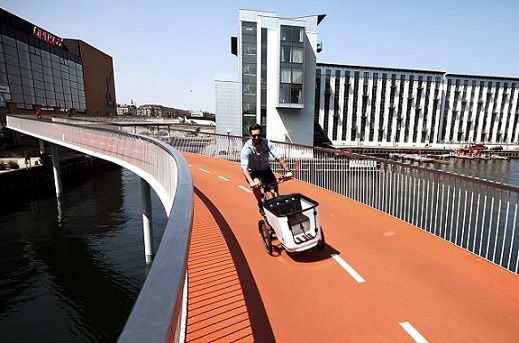According to figures collected by Copenhagen Municipality, around 120,000 people use the cycle bridges over the canals on a daily basis.
Over the last ten years, a number of bridges have been built in Copenhagen where cars are excluded. Ten of them have been constructed since 2014.
A net gain
The figures also reveal that the bridges are a net gain for society in terms of minimising CO2 and saving time.
For example, it is estimated that Byggebroen has generated savings of 380 man hours and at the same time another bridge, Cykelslangen, has saved around 1,400 km that would otherwise have been driven in a car. That equates to 87 tonnes of CO2 yearly. All in all, the municipality calculates that over 20 years, Cykelslangen will generate a net value of 44 million kroner.
More on the way
A number of new bridges are on the drawing board. Three joint bike/pedestrian bridges will cross the harbour, and Lille Langbro plus two bridges crossing the congested roads of Folehaven and Artillerivej are expected to open in 2018, 2019 and 2020 respectively.















